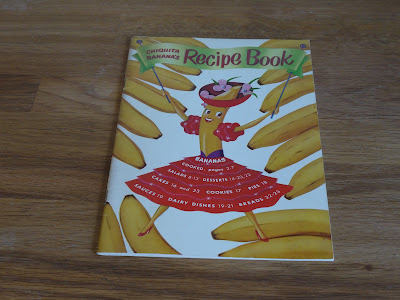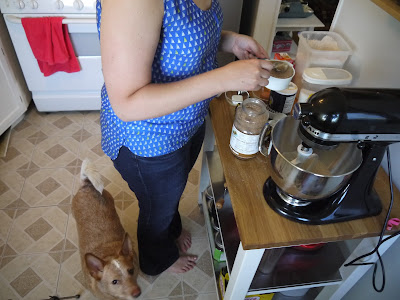With so many
Wartime Suggestions to choose from, it was difficult to decide on the first recipe to try on the blog. Actually, that's not true--as soon as I flipped to this section of the book, it was pretty clear we'd be having dessert first.
Eager for the sweet reward of homemade ice cream, my husband, Taylor, jumped in to help. So, full disclosure, he mixed the ingredients, and I photographed. Baby steps.
Okay, here we go! First we gathered the following ingredients:
1 can (1 1/2 cups) sweetened condensed milk
3 cups milk or coffee cream
2 tsps. vanilla
2 tsps. lemon juice (not pictured here, oops)
1) First heat one cup of milk, then add the can of sweetened condensed milk and blend.
We chose to make use of our KitchenAid stand mixer for this recipe, which, I might add, is likely what the original readers of Wartime Suggestions would have used for mixing, as well. Bonus points for keepin' it old school.
2) Add the remaining two cups of milk and lemon juice and blend. Then pour the mixture into the freezing tray and set the freezer's temperature control at the coldest position.
We don't have a "freezing tray" and our freezer is pretty much always in the coldest position. So we took some liberties with this step and poured the cream into a Pyrex container. Oh hey, there's the lemon juice! We got this.
3) When frozen, remove mixture to mixing bowl; add vanilla and whip with electric or hand beater until mix becomes light and creamy.
After a few hours, we pulled the cream from the freezer and poured it back into the mixing bowl. It wasn't quite frozen, but it looked a little like icy sludge in spots and it was getting late, so we decided it was as good as it was going to get. We swapped our beater attachment for our whisk attachment, added the vanilla, and within a few minutes our mixture was light and creamy. By whipping so much air into the mixture, it also multiplied! We ended up needing an additional container for the freezer.
4) Return quickly to freezing tray and allow to finish freezing. When
dessert is completely frozen, remember to turn temperature control half
way back to normal position for holding until serving time.
We didn't mess with the temperature controls, so once the cream reached the freezer shelf, our job was done. See that raspberry popsicle? I'm not ashamed
to admit that I ate it as soon as our
vanilla cream was nestled in its icebox bed.
Okay, here comes the good part. After freezing overnight, we taste-tested a few scoops of our concoction. The texture was like...snow. Like soft, fluffy, first snowfall of the season snow. It was solid enough to scoop into a ball, but it would probably fall apart if you threw it. Not that you'd want to throw this stuff. This recipe has much less fat than typical ice cream, and contains no real cream, per se. (Which is great for me, as lactose isn't exactly my best friend in the world.) It is supremely sweet and light and instantly melts in your mouth, like super sweet vanilla milk ice. The deeper we scooped into the container, the icier and more compacted the mixture became, but the flavor was still just as strong.
So would we make this again? Yes! With a few alterations. We might dial back on flavor by cutting a bit of the vanilla, and we might freeze the mixture in our pre-chilled KitchenAid ice cream bowl attachment to ensure more consistent texture.
Now that we know the deal, we'll likely try other more intriguing flavor
variations, like Marble Cream or Pineapple Milk Sherbet, to name a few. The sky's the limit, especially if you eat ice cream for dinner. Which I find to be quite necessary during the month of August, thank you very much.































